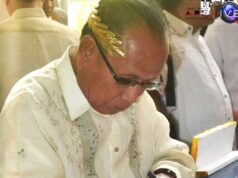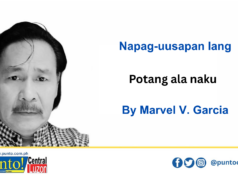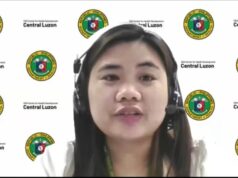In the thick of the wild are cottages, villas and log cabins for rent, and they’re not altogether Neanderthal as electricity and faucet water run in them. Here and there are agriculturally manicured farms, such as vegetable and ornamental garden plots where visitors are surprised by a growth whose flower is shaped like Mikey Mouse and thus bears such name, as well as trees that bear myriads of not-so-usual fruits such as Dragonfruit.
For the braver, the Davao Wild Water Adventure is one of Davao City’s unforgettable attractions. It’s rafting on the 13-kilometer Tamugan-Lacson part of the Upper Davao River, consisting of 25 rapids that run from mild to wild. After a short briefing from experts, the adventurer dons a helmet, and is given a plastic paddle before being boarded on the inflated raft for an adventure that can last four to five hours long.
The thrill of it all is put in visual history for the rest of the world to see as, from the banks of the river, cameramen record all on video and puts the choicest scenes in a disc given as souvenir to the survivor.
The city has a rather new attraction: two apparently abandoned mansions at Huno Subdivision, allegedly belonging to the political Ampatuan family of Maguindanao. The mansions are located across a street from each other, both high and thick-walled, dwarfing other mansions in the neighborhood for their sheer palatial size.
The fully painted one reportedly belongs to Andal Ampatuan Jr. and the other unpainted one, unfinished because the infamous Maguindanao massacre had reportedly caught up with its construction, allegedly belongs to the senior Ampatuan. Their concrete fences are reportedly 13 inches thick.
The two mansions are not mentioned as itinerary in guided tours of Davao, but tourists who learn about their existence often insist on being driven through them. Dictates of prudence, however, prompt tourist guides to discourage picture taking in the area.
Davao City also attracts because it is peaceful, with a crime rate made low, it can be assumed, by 40 high-powered cameras installed at posts all over the city. What these cameras catch 24 hours a day are viewed on 20 large monitors at the Public Safety Office that cost the city P700 million. And it’s paying off handsomely in many ways.
No one leaves Davao without brushing tongues with the durian. They come in 16 varieties, are harvested usually in August, and are eaten raw or in processed forms: pastillas, candies, cake, and even coffee.
Happily exhausted, the Angeles journalists land three days later at the Diosdado Macapagal International Airport at Clark Freeport.
They pin hopes on new Clark Development Corp. president Felipe Antonio Remollo, a native and former mayor of Dumaguete City not so far from Davao City, who has vowed to push eco-tourism at Clark and nearby areas which have neither durian nor the height of Mt. Apo, but take pride in Kapampangan cooking and the blue crater-lake of Mt. Pinatubo.
North of Clark are thousands of untapped lands, former US military reservations, which used to be known as the freeport’s “sub-zone” but which Remollo now wants to be referred to as Clark highlands. There, the CDC chief wants eco-tourism blooming.
In Angeles, Mayor Edgardo Pamintuan has vowed to put not only his city, but the entire Central Luzon on the country’s tourism map.
Pamintuan, who is also the chairman of Central Luzon’s Regional Development Council special committee, has cited “an urgent need to map out a more comprehensive tourism program for the region”.
This, amid a study done by Professor Cherry Lyn Rodolfo of the Research, Education and Institutional Development (REID) Foundation indicating that Central Luzon gets only five percent of total foreign arrivals in the country in the recent years.
The mayor’s eyes, alas, are also rightly on eco-tourism.




